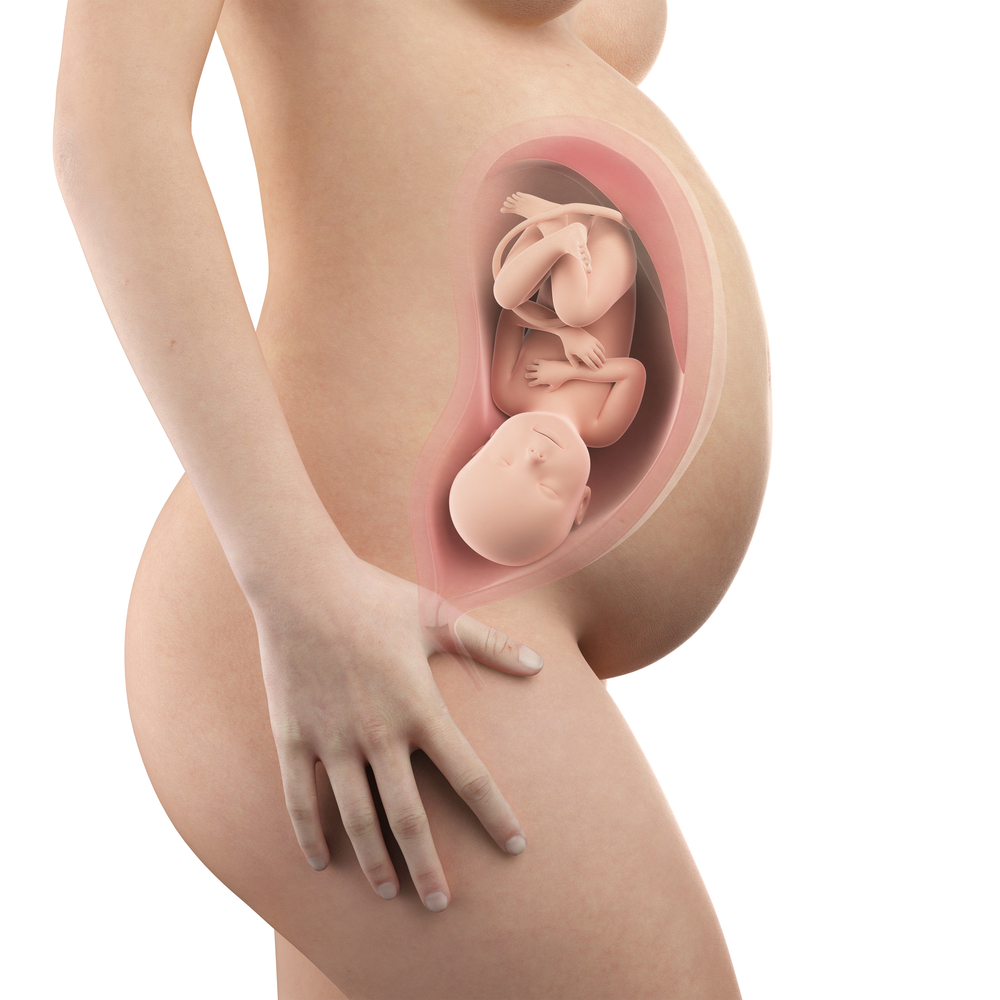Contents:
- Medical Video: 40 weeks pregnant | Fetal development | 40 weeks pregnant symptoms
- Embryo growth
- Changes in the Body
- What are the changes in the body of a pregnant woman at week 40?
- Visit to Doctor / Midwife
- What do I need to discuss with the doctor on week 40?
Medical Video: 40 weeks pregnant | Fetal development | 40 weeks pregnant symptoms
Embryo growth
How is the development of the fetus at 40 weeks' gestation?
After the development of the fetus for 40 weeks of pregnancy, your baby is now about the size of a small pumpkin weighing about 3.4 kg and a length of 50.8 cm. Your baby can be born at any time during this week.
However, only 5% of women give birth according to the estimated estimated delivery time. Many women who first become mothers wait for up to two weeks after the estimated time of delivery to welcome their baby's presence.
Don't expect that your baby will immediately look beautiful and attractive. Newborns often experience temporary changes in their head or head may be covered with vernix and blood. Your baby's skin may experience discoloration, dryness, and a lot of rashes.
Because in your baby's body system there are hormones, your baby's genitals (scrotum for baby boys and labia for baby girls) might look bigger. Your baby, both male and female, may remove milk from the nipple. This will disappear within a few days and is very normal.
Right after giving birth, the doctor will suck out the mucus from the baby's mouth and nose, and you will hear the first long awaited cry. Your baby will then be placed on top of your stomach, and the cord will be cut - usually by the father of the baby, if he chooses to do so.
A number of short tests such as the Apgar score will be conducted to assess the baby's response and vital signs, and he will be weighed and measured.
If your pregnancy is at high risk, or if a caesarean section is needed, a doctor who is an expert in NICU (newborn intensive care unit)will be present at the labor process to immediately deal with the baby before putting it on your lap.
Changes in the Body
What are the changes in the body of a pregnant woman at week 40?
This week you will feel the awaited moment - an introduction to your baby! Before you meet a baby, you have to go through labor. You might know from the prenatal class that there are three stages of the birth process.
The first step in labor is to thin and dilate your cervix by pressing the uterus at a certain time interval regularly. The second stage is when you push the baby out of the body through the vaginal canal. The third and fourth stage is when you remove the placenta.
If you do not give birth within one week after the estimated time of delivery, the doctor may recommend you take the test, which aims to monitor the heart rate and movements in the fetus to ensure that the baby receives enough oxygen and the nervous system can respond well. Talk to your doctor to find out more about this test.
If your labor is not progressing, or if your baby's health is urgent, the doctor may induce birth by tearing the membrane or by giving the hormone oxytocin and other drugs. If your pregnancy is at high risk or has potential complications, you may need a caesarean section.
Some women have known for a long time that they will give birth by caesarean section so that they can schedule a baby's birthday from a long time ago. If you are also like this, you may be able to prepare emotionally and mentally to welcome the D-day, and this will reduce the disappointment that is usually felt by many mothers who cannot give birth normally through the vagina. But even if you have to undergo a sudden cesarean section that was not planned beforehand, don't worry. You will still have the same attachment to your baby as if you were giving birth normally. This may not be the way you gave birth, but the important thing is that your baby is born into the world. The waiting period is over.
Maintain a pregnancy that runs 40 weeks
If your labor does not start, the doctor may use several techniques to stimulate birth. You can use drugs to relax and dilate the cervix. The doctor may also break the membranes with a plastic hook to create a hole in the amniotic sac. You will not feel pain, but when the amniotic fluid flows you will feel the warmth.
Visit to Doctor / Midwife
What do I need to discuss with the doctor on week 40?
Ask your doctor about the possibility of getting a drug to stimulate contractions. The dosage can be changed and adjusted for the frequency of your contractions.
Tests that may be needed at gestational age 40 Sunday
The closer you are to the appointed time, the doctor may check your pelvis regularly to ensure the position of your baby in the womb. The test can help the doctor know the position of your baby during labor later: head first, feet first, or buttocks first in your womb.
Most babies are in a head position at the end of pregnancy. At that position the baby's head is located right on the insides of your stage. During the pelvic test, the doctor will also examine the cervix to see if your cervix has begun to open or soften or thinner, and this information will be indicated by numbers and percentages.












